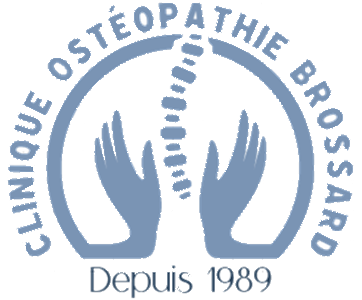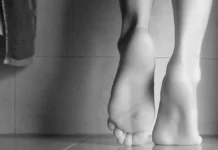Introduction
Raynaud’s disease is a vascular condition characterized by sudden constriction of the small arteries that supply blood to the extremities of the body, primarily the fingers and toes. This phenomenon causes a temporary decrease in blood flow, leading to paleness or cyanosis of the skin, followed by redness and sometimes swelling when blood flow is restored. Episodes of Raynaud’s disease may be triggered by cold, emotional stress, or other factors that cause an abnormal vascular response.
This disease, often classified as primary or secondary, can have significant implications on the quality of life of individuals who suffer from it. In its primary form, Raynaud’s disease occurs independently of other medical conditions, while the secondary form is often associated with autoimmune diseases such as lupus or scleroderma. Women are more commonly affected than men, and the first symptoms generally appear between adolescence and the thirties.
Episodes of Raynaud’s disease can be uncomfortable or even painful, and management of this condition aims to reduce the frequency and severity of attacks. Strategies include avoiding known triggers such as extreme cold, wearing warm clothing, and using relaxation techniques to manage stress. In some cases, vasodilator medications may be prescribed to help dilate blood vessels and improve blood flow.
In addition to physical symptoms, Raynaud’s disease can have a psychological impact due to the unpredictable nature of the attacks and their impact on daily activities. Psychological support and education on disease management play a crucial role in supporting those affected.
Although Raynaud’s disease is not generally considered life-threatening, it requires medical attention to assess the severity of symptoms and rule out other underlying conditions. Treatment approaches are personalized based on the severity of the disease and its implications on the patient’s daily life.
Causes
- Abnormal Vascular Reactivity: In Raynaud’s syndrome, the small arteries in the fingers and toes overreact to certain triggers, contracting abnormally in response to cold or stress. This excessive constriction reduces blood flow to these areas, leading to the characteristic symptoms.
- Genetic Factors: There is a genetic component to the development of Raynaud’s syndrome. A family history of the disease increases the risk of developing it. Certain genes associated with the regulation of blood circulation may play a role in genetic predisposition.
- Endothelial Dysfunction: The endothelium, the inner layer of blood vessels, plays a crucial role in regulating vascular tone. Endothelial dysfunction may contribute to the excessive constriction of blood vessels seen in Raynaud syndrome.
- Autoimmune Disorders: Raynaud’s syndrome is sometimes associated with autoimmune diseases such as systemic lupus erythematosus and scleroderma, where the immune system attacks the body’s tissues, including blood vessels.
- Hormonal Imbalances: Hormonal fluctuations, particularly in women, can influence vascular reactivity. Female hormones, such as estrogen, can impact blood flow.
- Exposure to Industrial Substances: Certain work environments may expose individuals to excessive vibrations, such as those produced by the use of certain power tools. This prolonged exposure may contribute to the development of Raynaud’s syndrome.
Symptoms

- Skin Color Changes: During a Raynaud’s attack, the fingers and toes may first turn white (ischemia) due to excessive constriction of small arteries, limiting blood flow to these areas.
- Cyanosis: Then, the skin color may change to blue or purple (cyanosis) due to decreased blood oxygen levels and reduced blood flow. Cyanosis is often most visible in the affected extremities.
- Hyperemia: When blood flow returns, fingers and toes may turn bright red (hyperemia), accompanied by a tingling or burning sensation. This stage may be associated with some pain or a feeling of numbness.
- Numbness or Tingling: People with Raynaud’s may experience numbness, tingling, or a burning sensation in their fingers, toes, or other affected body parts during and after an attack.
- Sensitivity to Cold: Hypersensitivity to cold is frequently observed in people with Raynaud’s. Even mild exposure to cold can trigger an attack.
- Variable Duration of Seizures: Raynaud’s seizures can vary in duration, from a few minutes to several hours. The frequency of seizures can also vary, with some people having them rarely, while others may experience them frequently.
Pathophysiology
The pathophysiology of Raynaud’s syndrome involves abnormalities in the regulation of peripheral blood circulation, particularly in the small arteries of the fingers and toes. This vascular dysregulation leads to episodes of excessive constriction of blood vessels, usually in response to cold or emotional stress. Understanding the underlying mechanisms of this condition helps explain the characteristic symptoms observed in individuals with Raynaud syndrome.
Here are the main components of the pathophysiology of Raynaud syndrome:
- Exaggerated Vascular Response: When people with Raynaud’s are exposed to cold or experience emotional stress, their blood vessels react in an exaggerated manner. Instead of maintaining normal vascular diameter, small arteries constrict excessively, limiting blood flow to the extremities.
- Constriction of Arteries: Excessive constriction of arteries, also called vasoconstriction, reduces the amount of blood that can reach the fingers, toes and other affected parts of the body. This leads to a decreased supply of oxygen to the tissues, which can cause color and temperature changes in the skin.
- Temporary Ischemia: When the constriction of the arteries is severe, it can lead to temporary ischemia, i.e. a reduction in blood flow to the affected region. This manifests itself as whitening of the skin and a feeling of cold.
- Reperfusion and Hyperemia: When vasoconstriction decreases, often in response to warming or reduced stress, blood flow can increase rapidly, leading to hyperemia. This phase is characterized by reddening of the skin and may be accompanied by tingling or burning sensations.
- Endothelial Dysfunction: Studies suggest that endothelial dysfunction, which affects the inner layer of blood vessels called the endothelium, plays a role in the pathophysiology of Raynaud’s syndrome. The endothelium plays a crucial role in regulating vascular tone, and any alteration in this function may contribute to the abnormal vascular response seen in Raynaud syndrome.
- Immune and Autoimmune Reactions: In some cases, Raynaud’s syndrome is associated with autoimmune diseases, such as systemic lupus erythematosus and scleroderma. In these situations, abnormal immune responses may contribute to the vascular dysregulation characteristic of Raynaud’s syndrome.
Diagnosis and Treatment
Diagnostic
The diagnosis of Raynaud’s syndrome is based on a thorough assessment of symptoms, the patient’s medical history, and clinical examination findings. Diagnostic steps include:
- Medical Interview: The doctor collects information about symptoms, frequency, potential triggers and other medical aspects.
- Physical Examination: A physical examination is performed to evaluate changes in color, temperature, and sensation in the fingers, toes, and other affected body parts.
- Laboratory Tests: Blood tests may be done to rule out other medical conditions that might present with similar symptoms.
- Imaging Tests: Thermography, which measures skin temperature, can be used to assess blood circulation in affected areas.
- Provocation Tests: Provocation tests, such as the cold test, can be performed in the clinic to trigger a vascular response and observe blood vessel reactions.
Treatment
Treatment of Raynaud’s syndrome aims to alleviate symptoms, prevent complications and improve quality of life. Treatment approaches may include:
- Avoidance of Triggers: People with Raynaud’s are often advised to avoid triggers such as extreme cold, emotional stress and smoking, which can trigger attacks.
- Heat Maintenance: Wearing warm clothing, particularly during cold months, is recommended to prevent episodes of excessive vasoconstriction.
- Stopping Smoking: Smoking can worsen the symptoms of Raynaud’s syndrome by reducing blood flow. Quitting smoking is often encouraged.
- Vasodilator Medications: Certain medications, such as calcium channel blockers and angiotensin-converting enzyme (ACE) inhibitors, may be prescribed to dilate blood vessels and improve circulation.
- Medications to Control Stress: Medications to help manage emotional stress may be recommended in some cases.
- Surgical Interventions: In severe cases resistant to conservative treatments, surgical interventions such as sympathectomy (section of the nerves responsible for vasoconstriction) may be considered.
Prevention
- Protection Against the Cold: People with Raynaud’s syndrome are often sensitive to the cold. It is recommended to wear warm clothing, including insulated gloves and socks, to maintain body heat.
- Avoidance of Emotional Stress: Emotional stress can trigger Raynaud’s attacks. Managing stress through relaxation techniques, meditation, yoga, or other methods can help reduce emotional triggers.
- Stopping Smoking: Smoking can worsen the symptoms of Raynaud’s syndrome by reducing blood flow. Quitting smoking is not only beneficial for general health, but can also improve blood circulation.
- Avoid Excessive Vibration: In certain professions, prolonged exposure to vibrations, such as those generated by the use of power tools, can be a trigger. If possible, taking regular breaks can help reduce this exposure.
- Maintaining a Comfortable Temperature: Ensuring you maintain a comfortable ambient temperature at home and at work can help prevent Raynaud’s attacks. Using space heaters if necessary can be helpful.
- Moderate Physical Exercise: Moderate physical exercise can improve blood circulation. However, it is important to choose appropriate activities and consult a healthcare professional before starting an exercise program.
- Balanced Diet: Adopting a balanced diet can help maintain good vascular health. It is recommended to favor a diet rich in fruits, vegetables, whole grains and to limit the consumption of foods rich in saturated fats.
- Regular Medical Follow-up: Regular medical follow-up with a health professional, generally a rheumatologist, makes it possible to monitor the evolution of Raynaud’s syndrome and adjust the treatment plan if necessary.
Conclusion
In conclusion, Raynaud’s syndrome is a vascular condition characterized by excessive constriction of small arteries, usually triggered by cold or emotional stress. Although often mild, this syndrome can cause uncomfortable symptoms and, in some cases, serious complications. The pathophysiology of Raynaud syndrome involves an abnormal vascular response, leading to color and temperature changes in the affected areas.
Diagnosis of Raynaud syndrome is based on a thorough evaluation of symptoms, medical history and clinical tests. Management of this condition aims to alleviate symptoms, prevent complications and improve the quality of life of affected individuals. Treatments may include lifestyle modifications, vasodilator medications, stress management, and in some cases, surgical procedures.
Prevention of Raynaud’s syndrome focuses on reducing potential triggers such as cold and stress, as well as managing risk factors. Simple measures, such as wearing warm clothing, avoiding tobacco, and finding stress management methods, can help minimize seizures.
Finally, it is essential to emphasize that each individual reacts differently to Raynaud’s syndrome, and an individualized approach to treatment and prevention is crucial. Close collaboration with health professionals, regular follow-ups and continued awareness-raising are fundamental to optimize the management of this condition and improve the quality of life of people affected by it.
References
- Ventura I, Reid P, Jan R. Approach to Patients with Suspected Rheumatic Disease. Prim Care. 2018 Jun;45(2):169-180. [ PubMed ]2.
- Pauling JD, Reilly E, Smith T, Frech TM. Evolving Symptom Characteristics of Raynaud’s Phenomenon in Systemic Sclerosis and Their Association With Physician and Patient-Reported Assessments of Disease Severity. Arthritis Care Res (Hoboken). 2019 Aug;71(8):1119-1126. [ PubMed ]3.
- Fernández-Codina A, Walker KM, Pope JE., Scleroderma Algorithm Group. Treatment Algorithms for Systemic Sclerosis According to Experts. Arthritis Rheumatol. 2018 Nov;70(11):1820-1828. [ PubMed ]4.
- Wollina U, Koch A, Langner D, Hansel G, Heinig B, Lotti T, Tchernev G. Acrocyanosis – A Symptom with Many Facets. Open Access Maced J Med Sci. 2018 Jan 25;6(1):208-212. [ PMC free article ] [ PubMed ]5.
- Ruaro B, Sulli A, Smith V, Pizzorni C, Paolino S, Alessandri E, Cutolo M. Microvascular damage evaluation in systemic sclerosis: the role of nailfold videocapillaroscopy and laser techniques. Reumatism. 2017 Dec 21;69(4):147-155. [ PubMed ]6.
- Belch J, Carlizza A, Carpentier PH, Constans J, Khan F, Wautrecht JC, Visona A, Heiss C, Brodeman M, Pécsvárady Z, Roztocil K, Colgan MP, Vasic D, Gottsäter A, Amann-Vesti B, Chraim A, Poredoš P, Olinic DM, Madaric J, Nikol S, Herrick AL, Sprynger M, Klein-Weigel P, Hafner F, Staub D, Zeman Z. ESVM guidelines – the diagnosis and management of Raynaud’s phenomenon. Vasa. 2017 Oct;46(6):413-423. [ PubMed ]7.
- Ingegnoli F, Ughi N, Dinsdale G, Orenti A, Boracchi P, Allanore Y, Foeldvari I, Sulli A, Cutolo M, Smith V, Herrick AL., EULAR Study Group on Microcirculation in Rheumatic Diseases. An international SURVEY on non-invaSive techniques to assess the microcirculation in patients with RayNaud’s phenomenon (SUNSHINE survey). Rheumatol Int. 2017 Nov;37(11):1879-1890. [ PubMed ]8.
- Lee KA, Chung HW, Lee SH, Kim HR. The use of hand perfusion scintigraphy to assess Raynaud’s phenomenon associated with hand-arm vibration syndrome. Clin Exp Rheumatol. 2017 Sep-Oct;35 Suppl 106(4):138-143. [ PubMed ]9.
- Vidal C, Ruano C, Bernardino V, Lavado Carreira P, Lladó A, Santos MC, Gruner H, Panarra A, Riso N, Moraes-Fontes MF. Clinical Presentation and Long-Term Outcomes of Systemic Sclerosis Portuguese Patients from a Single Center Cohort: A EUSTAR Registration Initiative. Acta Med Port. 2018 Jun 29;31(6):312-320. [ PubMed ]10.
- Ingegnoli F, Ughi N, Crotti C, Mosca M, Tani C. Outcomes, rates and predictors of transition of isolated Raynaud’s phenomenon: a systematic review and meta-analysis. Swiss Med Wkly. 2017;147:w14506. [ PubMed ]11.
- Mirbod SM, Sugiura H. A non-invasive technique for the evaluation of peripheral circulatory functions in female subjects with Raynaud’s phenomenon. IndHealth. 2017 Jun 08;55(3):275-284. [ PMC free article ] [ PubMed ]12.
- Daniels J, Pauling JD, Eccelston C. Behavior change interventions for the management of Raynaud’s phenomenon: a systematic review protocol. BMJ Open. 2017 Aug 04;7(8):e017039. [ PMC free article ] [ PubMed ]13.
- Pain CE, Constantin T, Toplak N, Moll M, Iking-Konert C, Piotto DP, Aktay Ayaz N, Nemcova D, Hoeger PH, Cutolo M, Smith V, Foeldvari I., Pediatric Rheumatology European Society (PRES) Juvenile Scleroderma Working Group. Raynaud’s syndrome in children: systematic review and development of recommendations for assessment and monitoring. Clin Exp Rheumatol. 2016 Sep-Oct;34 Suppl 100(5):200-206. [ PubMed ]14.
- Pope J, Harding S, Khimdas S, Bonner A, Canadian Scleroderma Research Group. Baron M. Agreement with guidelines from a large database for management of systemic sclerosis: results from the Canadian Scleroderma Research Group. J Rheumatol. 2012 Mar;39(3):524-31. [ PubMed ]15.
- Klein-Weigel P, Opitz C, Riemekasten G. Systemic sclerosis – a systematic overview: part 1 – Raynaud’s disease characteristics and classification, pathophysiologic concepts, and recommendations for diagnosis and surveillance. Vasa. 2011 Jan;40(1):6-19. [ PubMed ]

























